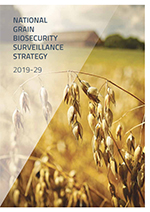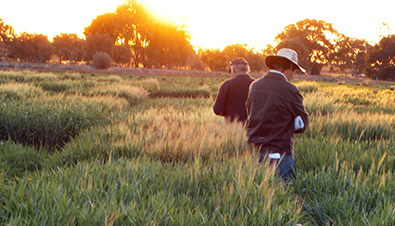Read the latest information on
Foot-and-mouth disease
 The Australian grains industry is better protected from exotic pests and diseases with the recent development of a National Grain Biosecurity Surveillance Strategy.
The Australian grains industry is better protected from exotic pests and diseases with the recent development of a National Grain Biosecurity Surveillance Strategy.
Stuart Kearns, National Manager Preparedness and RD&E at Plant Health Australia, led the development of the strategy, along with Grain Producers Australia.
“When developing the strategy, we wanted to gain a thorough understanding of the current state of surveillance in the Australian grain industry,” said Stuart.
While currently there are many important surveillance activities occurring for and by the grain industry, they are inconsistent and uncoordinated as identified in a recent gap analysis.
“We found that there are government surveillance programs and industry surveillance and crop monitoring programs occurring largely independently of each other.”
“There is also an increasing proportion of surveillance being done by industry, agribusiness and the science and research community that sits outside of governments. In fact, in the grain industry, surveillance activities are made up almost entirely of industry programs.”
“There’s definitely a need for a national coordinated surveillance program across the grain industry to achieve some degree of national consistency or compatibility between the approaches used for surveillance.”
“The National Grain Biosecurity Surveillance Strategy has been developed to guide this coordination and integration of surveillance efforts by industry, the science and research community and Australian governments.”
 “It is designed to fit within other existing national strategies and programs, but also looks at the specific needs of grain industry.”
“It is designed to fit within other existing national strategies and programs, but also looks at the specific needs of grain industry.”
Stuart said that an implementation plan for the strategy is currently in development.
“The strategy’s implementation will require strong stakeholder partnerships, robust governance and a sustainable and equitable funding model, and through the implementation plan we hope to address these issues,” he said.
You can download a copy of the strategy from the Plant Health Australia website or email biosecurity@phau.com.au